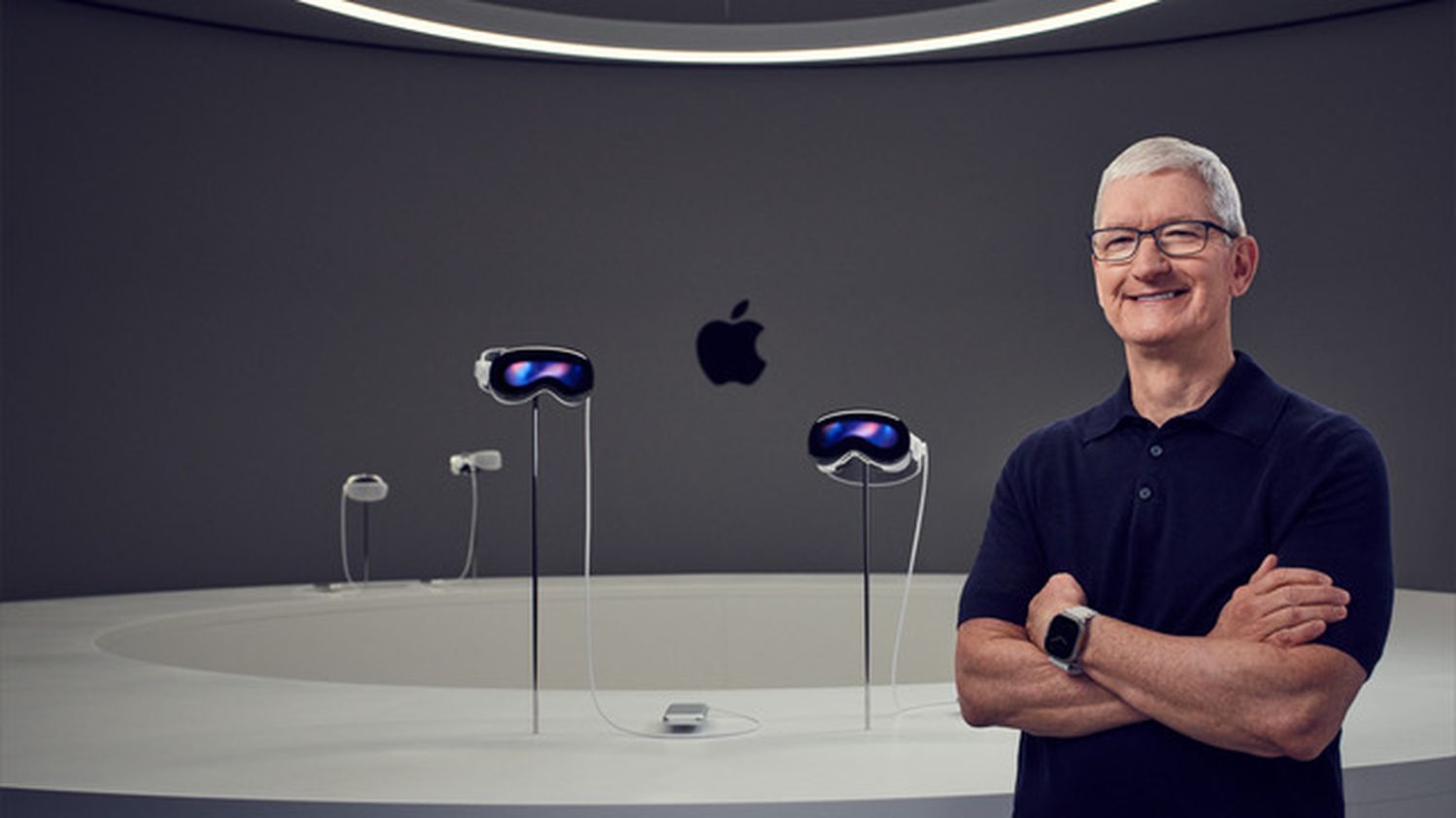Apple unveiled its mixed reality mask, the Vision Pro, on June 5 in California. Tim Cook spoke of a historic day and the future of computing with this mask that contains the equivalent of a Mac computer and a gigantic screen. Inside, the room around you serves as a three-dimensional support for your application windows. So much for innovation but many questions remain.
Is the Vision Pro really the anti-isolation mask that Apple promises? So it’s true: when someone walks up to it, the user’s eyes and upper facial expressions appear on the front of the mask, allowing for interaction. Similarly, the person who presents himself is integrated, inside the mask for the one who wears it, by one of the 12 cameras.
However, and even Mark Zuckerberg noticed it: “In each demonstration made by Apple, we see a single person, on a sofa”. That’s right, with the exception of this man who seems to work in a open space professional. Nevertheless: since it is a “Pro” product, both in name and price, it is curious to present it mainly for use at home. And then, at 4,500 € per mask, probable price including VAT in France when it comes out, if, on the sofa, we add a spouse and two children, it is not one mask that is needed but four. Suffice to say the price of a beautiful car, which puts it beyond the reach of the general public.
Then, we fall back into the problem that had plagued 3D TVs with glasses: no one really wants to watch a family film, each being in their own bubble.
Progress for graphic designers?
About working, will everyone really be able to work with it? For office automation, yes, especially since Microsoft, with the Office suite, has already been cited among the publishers who will offer their software in a dedicated version for the mask. On the other hand, graphic arts, photo editing, everything that requires very high resolution today, has greater working comfort on 5K monitors, or even more, flat screens, desktops, traditional. Despite its 23 million pixels, the Vision Pro may not represent progress, at least in terms of display quality. It will obviously be tested.
What about glasses wearers? This is one of the differences with the masks in particular from Meta, between four and seven times cheaper, depending on the model: impossible to put on the Vision Pro while keeping your glasses. It will therefore be necessary to order dedicated magnetic optical inserts, created in partnership between Apple and Zeiss: a probable additional cost of $300 to $600, according to our colleague Mark Gurman of Bloomberg. We would then exceed 5,000 € including tax in France. In other words, it is better to wear contact lenses.
External battery at the end of a wire
Another question: Apple was made fun of for the wire on the leg of its mask, this cable with an external battery at its end. Why did you make this choice? During the almost eight years of development, this was – apparently – one of the main topics of debate internally, between the supporters of an integrated whole, and those who preferred the external option.
The interest, by deporting this battery, is not to add weight to the mask, precise weight which remains a secret to this day. Apple is talking about a little over a pound, probably between 500 and 600g. The Vision Pro, relieved of its battery, would therefore weigh more than the Quest 3, but less than the Quest Pro, offered by Meta. The weight is however not the only criterion: the way in which it is distributed counts at least as much.
Finally, why have we seen no image of Tim Cook with his mask on his face? It was however a tradition, at Apple, since Steve Jobs with the Mac, the iPod, the iPhone then the iPad. Tim Cook carried it on with the launch of the Apple Watch in 2014, which he proudly wore on his wrist.
In the case of the Vision Pro, it’s the first time that an Apple boss hasn’t brandished or worn what is nevertheless presented as a revolutionary product, certainly a breakthrough one. Tim Cook just posed next to the mask for the “official” photo as if he was having a hard time accepting it, and no doubt quite a few other questions to be answered before its launch, in the United States only initially, at the beginning of 2024.
